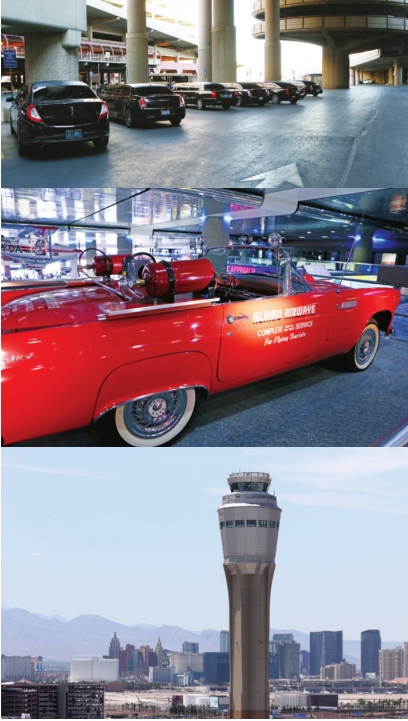

SOCAL LOVES THE ‘VEGAS ROAD TRIP,’ BUT FLYING INTO LAS HAS ITS PERKS
While The Las Vegas Strip is a straightforward, four- to five-hour drive from most of Southern California, many choose to take to the skies for one of the shortest flights people can take: While it’s officially listed as an hour and 20 minutes, it feels like the plane is approaching its destination after a second or third sip of coffee.
In fact, the numbers are fairly staggering. Even during the pandemic-tightened year of 2020-21, half a million travelers flew from LAX to LAS and 275,000 from SAN to LAS, now officially named Harry Reid International Airport on all FAA maps.
That’s right. McCarran is out, and Reid is in. And while an official name changing ceremony had yet to occur at press time, the airport boasts some fascinating facts and very Vegas amenities, regardless of how you want to refer to it.
A History of Innovation 
While Las Vegas’ airport got started like many in the Southwest, a dusty strip of land fielding general aviation and serving a military purpose (in this case, a gunnery field), it soon had to step up to support the rapidly growing commercial aviation sector.
Then-Nevada senator Pat McCarran helped allocate the funding, and the field was named McCarran Airport.
As the city grew into a major national tourist attraction, the airport rapidly expanded and was served by heyday air services like TWA, Hughes and Western.
As Vegas became internationally known, the airport had no choice but to continue expanding.
McCarran installed the first common-use check-in and kiosk systems in the nation, allowing multiple carriers to use airport facilities to ensure that lines didn’t back up and flights weren’t missed. Later, this was expanded to electronic check-in kiosks and even check-in abilities off-site. McCarran was among the pioneers in offering Wi-Fi inside its airports – installed in 2005, the system predated the first smartphones by several years.
If you have a moment prior to boarding, be sure to check out the Howard W. Cannon Aviation Museum to learn more. Located above baggage claim in Concourse D (with additional kiosks located throughout the terminals), the museum features fascinating artifacts from the aviation center’s history–none more unique than the 1956 Ford Thunderbird convertible that was used as a high-speed emergency dispatch vehicle at the airport and was a fixture during the 50s and 60s.